Travel Vietnam on a new luxury train
Enjoy top-class service and spa treatments on this new rail journey connecting hotels in Da Nang and Quy Nhon.

At 9.30am, shortly after our train leaves the station, barman Tien asks if I’d like a drink. Bit early for me, I say, though clearly not for the three Portuguese men already knocking back Champagne at the carriage’s marble bar. In such indulgent surrounds it’s tempting to follow suit but for now I stick to an ethically sourced coffee from La Folliet, Vietnam’s answer to Nespresso, and nibble flaky pastries while admiring the show outside my window.
The laid back, six-hour journey from Da Nang in central Vietnam some 300km south to coastal Quy Nhon, is a moving postcard of emerald rice paddies and red-roofed villages backed by jagged, jungly mountains; of temples and spirit houses, kingfishers on power lines, schoolchildren in scarlet neckerchiefs; lakes, rivers and the occasional glimpse of sparkling ocean.
I’m travelling aboard The Vietage, a luxury rail carriage coupled to the main Hanoi-Ho Chi Minh City service, that began taking foreign passengers after travel restrictions lifted last year. It moves, like its host locomotive, at a leisurely but effective 50km/h, giving passengers ample time to absorb the ambience and be pampered in a manner I haven’t experienced since the Venice Simplon-Orient-Express.
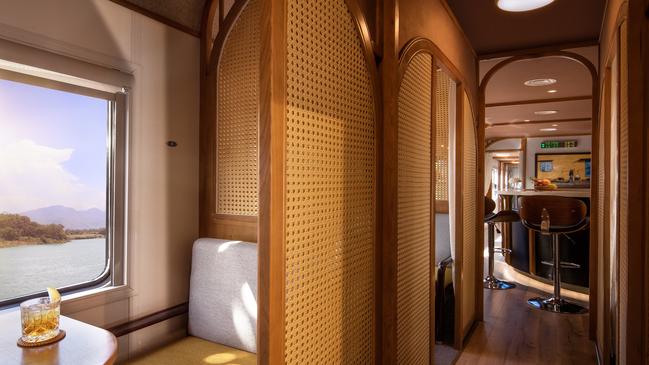
The Vietage offers a far more confined indulgence – it’s just a single carriage with 12 seats in six booths, semi-partitioned with ivory silk curtains that can be drawn for privacy. Each alcove has two broad, cushioned armchairs, wickerwork walls and carpeted floors. Grey marl care-kits come stuffed with neck pillow, blanket, eye mask, slippers and dental, hair and vanity kits.
Around 11am, steward Huy appears to ask if I’d like a massage, a complimentary treat for all passengers. In the spa room behind the bar I assume position on the angled chair and he sets to work kneading, chopping, pressing and pounding my back and shoulders.
Afterwards he mixes me a Vietage Tropical Mule, a pleasant medley of mandarin vodka, coconut liqueur, housemade ginger beer and fruit juices. It’s one of several signature cocktails and mocktails offered alongside Australian sparkling, Chilean, New Zealand, French and Italian wines and Vietnamese craft beers. There are premium wines, Champagne, caviar (from Da Lat in central Vietnam) and cheeses at extra charge.
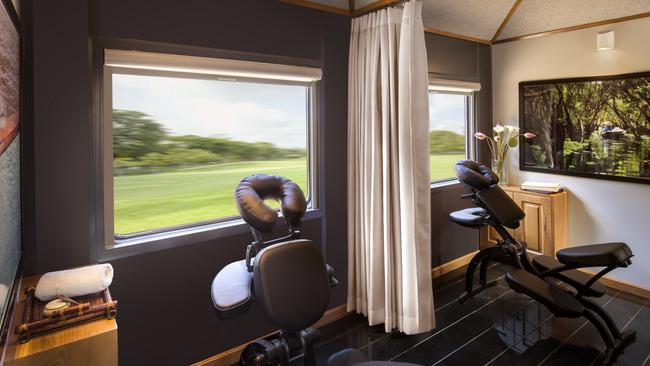
By lunchtime the Portuguese have switched to red and I’m on white to supplement my Quy Nhon seafood salad of grilled calamari and king prawns. For main course, tomato and asparagus barley risotto crowned with meaty king mushrooms and Parmesan. Dessert is a simple bowl of coconut yoghurt and Da Lat strawberries with Vietnamese basil.
The entire Vietage production – and it does feel like a particularly elaborate show, in a good way – is the work of Anantara, which launched the rail journey to connect guests staying at two of its Vietnam properties, in historic Hoi An and beside the jade seas of Quy Nhon.
The Hoi An property is a handsome, colonial-inspired pile of whitewashed arches, balustrades and colonnades on the north bank of the Thu Bon River. It’s a short walk from Hoi An old town, listed by UNESCO as an “exceptionally well-preserved example of a South-East Asian trading port”. Hoi An also has arguably the world’s largest concentration of colourful paper lanterns, so it is wildly photogenic and overrun with Instagrammers.
The appeal of staying at the 94-room Anantara property is that guests live on the edge of the action but not in the thick of it. The bustling central market is less than 10 minutes by foot and the city’s thriving dining, bar and design culture is literally on your doorstep. Lodgings are spacious, split-level accommodations of lounge below, bed and bath above. Some face the heated central pool or gardens of slender palms, lush lawns and lofty frangipani. Mine opens out to a cushioned riverside balcony where I watch the world float, motor, jog, walk or cycle by. It’s endlessly captivating.
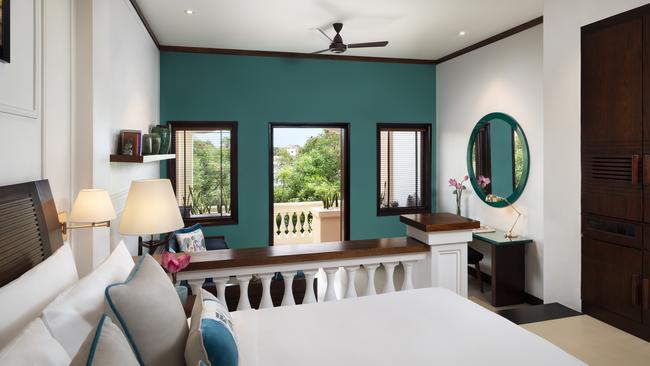
One thing Anantara excels at is immersive local tours. Phuoc Huu Huynh is the city’s food guru and, over four hours, introduces me to a dozen of the city’s authentic dishes and their makers. These include Madame Thanh’s xi ma pots of black sesame pudding, Madame Nghia’s famous beef rice-noodle soup (bun bo), and Madame Tu’s steamed rice pancakes of pork belly and prawns prepared and served from her laneway home.
When not scoffing street foods I’m happy spending balmy evenings at Anantara’s Riverside restaurant, dining on Hoi An’s famous white-rose dumplings and chicken rice, and drinking from an ambitious wine list that runs to Coravin pours of choice vintages.
Breakfasts are served in airy upstairs restaurant Lanterns where the expansive buffet runs to coffee kombucha, a doughnut cart and DIY pho. The resort also has a more casual streetside diner, Art Space, serving wood-fired pizzas in a gallery hung with local artworks, including renowned photographer Rehahn, whose chromatic portraits adorn every room.
From Dieu Tri railway station it’s a 20-minute Land Rover transfer through city streets and coastal roads to Anantara Quy Nhon, a small-scale resort of 26 one and two-bedroom villas fronting the beach or anchored on the hillside behind. Set in 3ha of landscaped tropical gardens, all have either point-blank or elevated ocean views and bonus infinity pools.
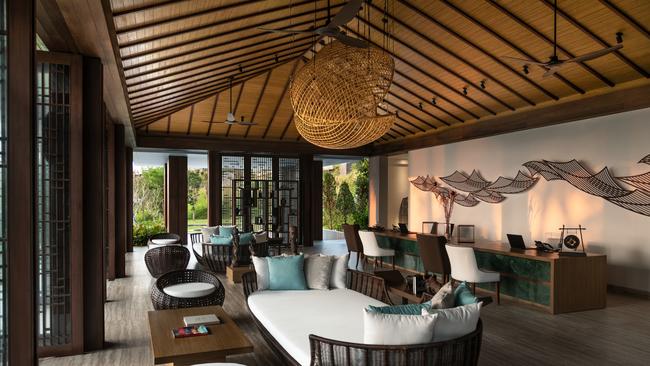
The light-filled suites contain king beds in crisp white linens and striking bathrooms in brindled local marble with egg baths positioned for relaxing ocean views. They are beautifully finished but, sadly, they are not perfect. When villa attendant Quy leads me outside on to the teak deck with its inviting blue-granite pool and daybed pavilion, he apologises. “I am sorry for the leaf,” he says. I look down. A single leaf has fallen into the pool. Paradise is ruined.
Perhaps because Quy Nhon isn’t well-known yet as a beach destination, it often feels like staff are trying extra hard to win guests over (again, in a good way). On arrival spa manager Dao gives me a neck and shoulder massage to ease the stresses of my gruelling train journey.
The centrepiece Sea.Fire.Salt restaurant offers elaborate menu options including hot Himalayan salt rocks laden with premium surf and turf (whole lobster, NZ lamb), dishes licked with gold leaf or caviar and a wine list that tops out at Penfold’s Grange and a 2015 Chateau Margaux.

The busy roster of weekly activities includes daily yoga and meditation, Vietnamese afternoon tea and movies under the stars. There are also discovery excursions of Binh Dinh province including market visits with executive chef Tran Tuan Vinh and lessons in the local martial art, viet vo dao.
On a cultural safari with the affable Mr Thich, I visit Quang Trung Museum, where people throng to an ancient well to wash in its auspicious waters, and a 400-year-old pagoda set in gardens of bonsai and rose.
In flame tree-lined Quy Nhon city we lunch at Gia Vy 2, facing the main square with its bronze statues of Uncle Ho and his father. Their specialty is crisp banh xeo pancakes laden with beef and shrimp, which we wrap in rice paper with fish sauce-cured mango and cucumber, herbs and chilli for a lunch of legends. Two young women beside me insist I help them polish off their supersized serving of fried pork and prawn spring rolls, and share tips on the best way to eat them. As the only Western tourist in sight, I’m showered with attention.
But the highlight of Quy Nhon for me is exploring its ancient ruins. The province is littered with relics of the Cham Hindu empire including the faintly haunting Duong Long, a 12th century temple of three soaring towers, the tallest 24m high, crowned with carved stone lotus blossoms. It’s a magnificent sight and I have it all to myself – Mr Thich even has to summon a security guard to open the gates for me.
This, and of course the train journey, is perhaps the most compelling reason to visit Quy Nhon now, to discover this rich and relatively untouched corner of the Vietnamese coast before everyone else does.
Kendall Hill was a guest of Anantara Hotels, Resorts & Spas.
IN THE KNOW
One-way fares on The Vietage cost $US400 ($605) from Da Nang to Quy Nhon and $US300 for the less popular evening run in reverse, which lacks scenery and arrives into Da Nang after midnight. Rates at Anantara Hoi An start from $US300 a night; villas at Anantara Quy Nhon from $US600 a night, both with breakfast included.



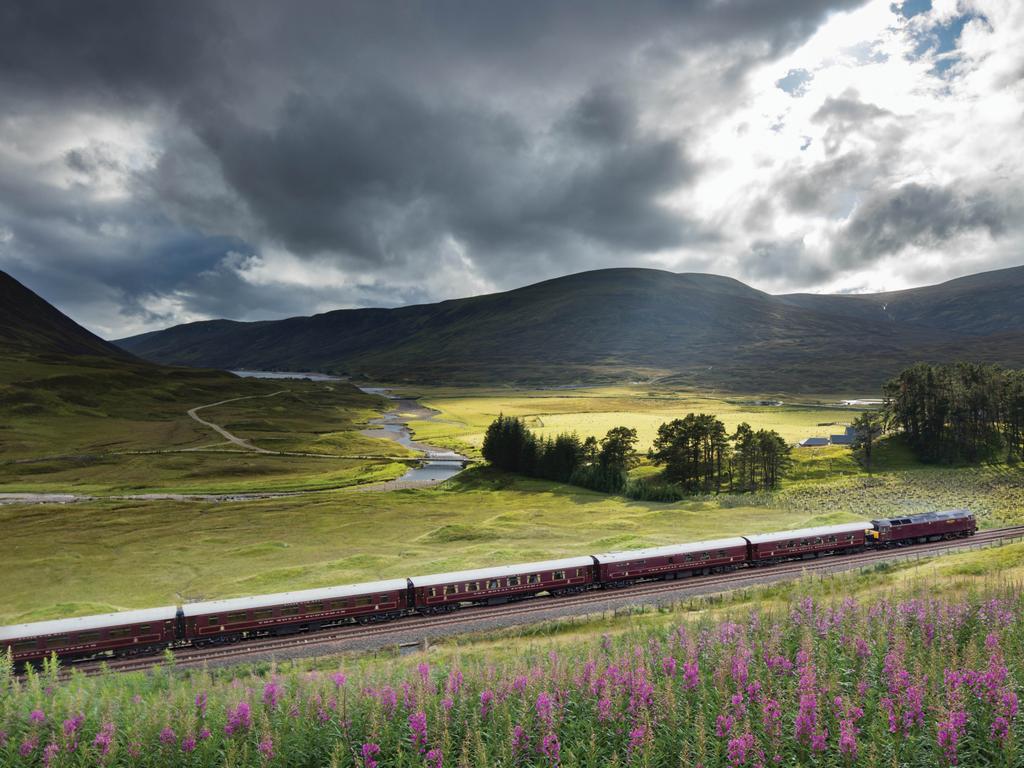

To join the conversation, please log in. Don't have an account? Register
Join the conversation, you are commenting as Logout